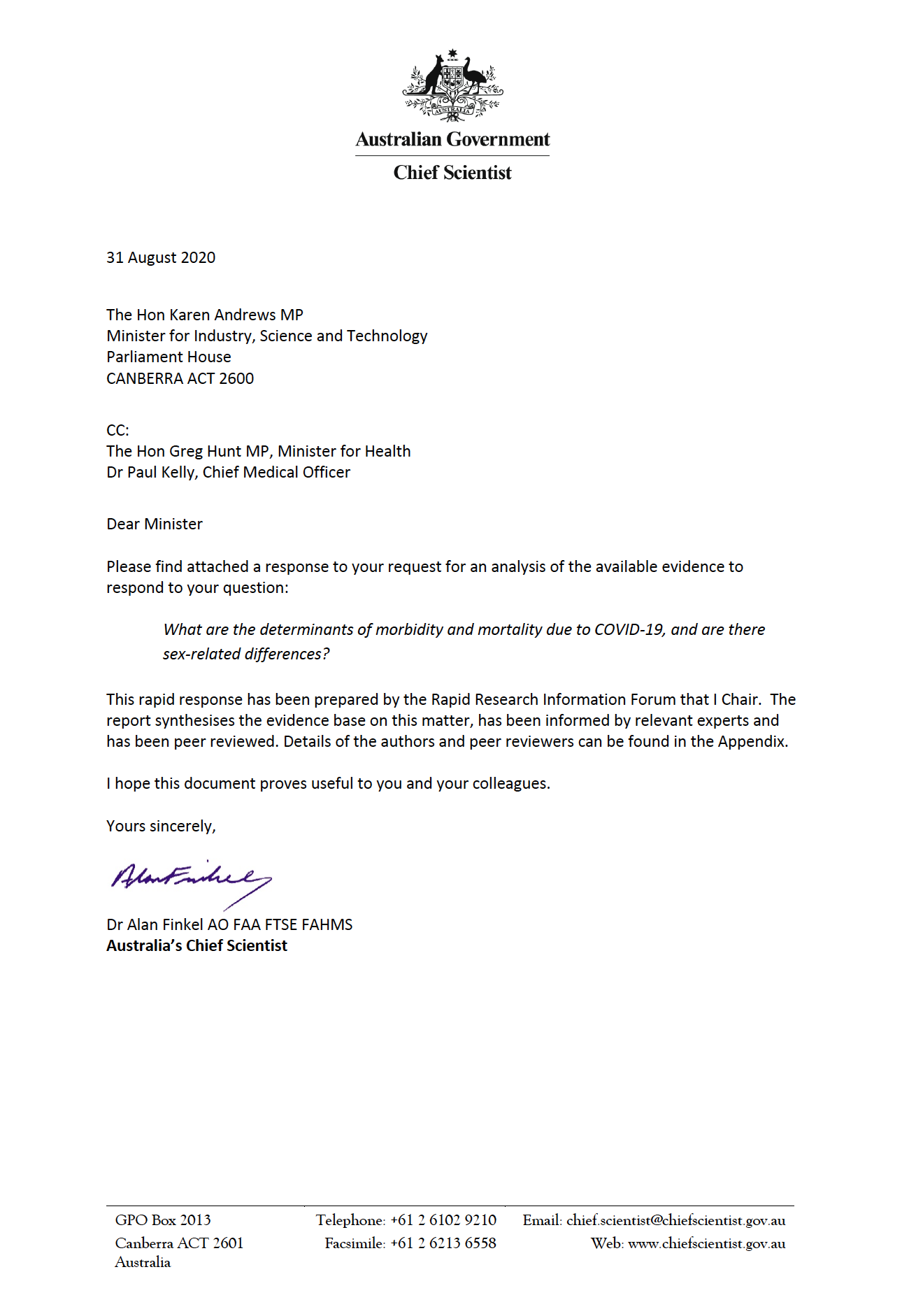Morbidity, mortality and sex-specific impacts of COVID-19
This rapid research brief synthesises the evidence on determinants of morbidity and mortality due to COVID-19, and sex-related differences.
Key findings:
- There is little evidence that biological differences, including age, sex and comorbidity, influence the risk of acquiring the infection.
- Age is the leading determinant of severe disease and death among people with COVID-19. The risk associated with age increases rapidly from the age of 40 years.
- Compared to females, males with COVID-19 are more likely to be hospitalised, more likely to be admitted to an ICU and more likely to die.
- Among people with COVID-19, many medical comorbidities, such as heart disease and chronic obstructive pulmonary disease, increase the risk of hospitalisation, ICU admission and death. However, some comorbidities, such as asthma, probably do not increase risks.
- Low socio-economic status increases both the risk of acquiring COVID-19 and the risk of developing severe disease once infected. Risk of severe disease once infected is probably mainly due to the prevalence of comorbidities that are associated with low socio-economic status.
- The data on prolonged morbidity of COVID-19 among survivors are not yet available. Therefore, the factors that predict a higher risk of prolonged morbidity, and the nature of these long-term effects, remain to be defined.






